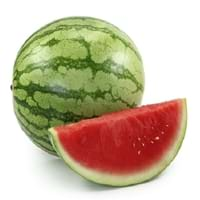Health Benefits
Anti-oxidant properties, Eye care, Helps in cartilage regeneration, Regulates Blood Sugar, Treatment of osteoarthritis
Anti-aging benefits, Anti-inflammatory properties, Asthma treatment, Body hydration, Cancer prevention, Digestive aid, Skin cleansing, Skin rejuvenation
General Benefits
Boosts immune system, Digestive aid
Anti-inflammatory properties, Body hydration, Controls blood pressure, Digestive aid, Maintains healthy cholesterol level
Skin Benefits
Anti-aging benefits, Reduces wrinkles, Treatment of skin diseases
Anti-aging benefits, Brightens and lightens complexion, Hydrates skin
Hair Benefits
Protects hair, Regulates hair growth
Promotes longer and healthier hair, Regulates hair growth
Allergy Symptoms
Anaphylaxis, Itching, Sneezing, Wheezing
Breathing difficulty, Decrease in blood pressure, Dizziness, Eczema, Hives, Runny nose, Swelling of mouth, tongue or lips, Watery eyes
Side Effects
May interact with some drugs
Allergic reaction, Bloating, Diarrhoea, Indigestion, Intestinal gas, Nausea, Vomiting
Best Time to Eat
Any time except an hour after meal, Don't consume at night and before bed
As a snack in the late afternoon, Don't consume at night and before bed, Eat the fresh ones, avoid mixing with any other foods, don't eat after meal., Strictly avoid empty stomach
Vitamin B5 (Pantothenic Acid)
Vitamin C (Ascorbic Acid)
Vitamin K (Phyllochinone)
Calories in Fresh Fruit with Peel
Not Available
Calories in Fresh Fruit without Peel
Not Available
Calories in Frozen Form
Not Available
Calories in Canned Form
Not Available
Not Available
Varieties
No Types
Sugar Baby, Sangria, Golden Midget, Starlight, Jubilee, Starbrite, Extazy, Stars 'n' Stripes, Mickylee, Yellow Baby, Yellow Doll, Little Baby Flower, Sweet Favorite and Cream of Saskatchewan
Color
Scarlet red
Canary yellow, Coral red, Orange, Salmon yellow, Scarlet red, White
Taste
Slightly bitter, Tart
Sweet
Origin
Unknown
Southern Africa
Soil Type
Well-drained
Sandy, Well-drained
Climatic Conditions
Cold, Hot
Dry, Hot
Facts about
- Study says a man named Li Qing Yuen used to eat goji berries daily and lived for 252 years.
- They are also known as wolfberries in India & China.
- This fruit is used for spiritual purposes at many places.
- Watermelon contain 91% of water.
- In Japan & Chine, watermelon is a popular gift to bring a host.
- Entire watermelon is edible, even the rinds & seeds.
- There are more than 1200 varieties grown in the world.
Other Countries
Canada, France, India, United States of America
Algeria, Brazil, Egypt, Iran, Kazakhstan, Mexico, Spain, Turkey, United States of America
Top Importer
United States of America
Germany
Botanical Name
Lycium barbarum
Citrullus Lanatus
Synonym
Wolfberry
Citrullus vulgaris
Subkingdom
Tracheobionta
Tracheobionta
Division
Unknown
Magnoliophyta
Class
Unknown
Magnoliopsida
Subclass
Asteridae
Dillenhidae
Order
Solanales
Cucurbitales
Family
Solanaceae
Cucurbitaceae
Species
L. barbarum
C. lanatus
Generic Group
Not Available
Gourd
Difference Between Gojiberry and Watermelon
We might think that Gojiberry and Watermelon are similar with respect to nutritional value and health benefits. But the nutrient content of both fruits is different. Gojiberry and Watermelon Facts such as their taste, shape, color, and size are also distinct. The difference between Gojiberry and Watermelon is explained here.
The amount of calories in 100 gm of fresh Gojiberry and Watermelon with peel is 32.00 kcal and Not Available and the amount of calories without peel is Not Available and 30.00 kcal respectively. Thus, Gojiberry and Watermelon belong to and category.These fruits might or might not differ with respect to their scientific classification. The order of Gojiberry and Watermelon is Solanales and Cucurbitales respectively. Gojiberry belongs to Solanaceae family and Watermelon belongs to Cucurbitaceae family. Gojiberry belongs to Lycium genus of L. barbarum species and Watermelon belongs to Citrullus genus of C. lanatus species. Beings plants, both fruits belong to Plantae Kingdom.









